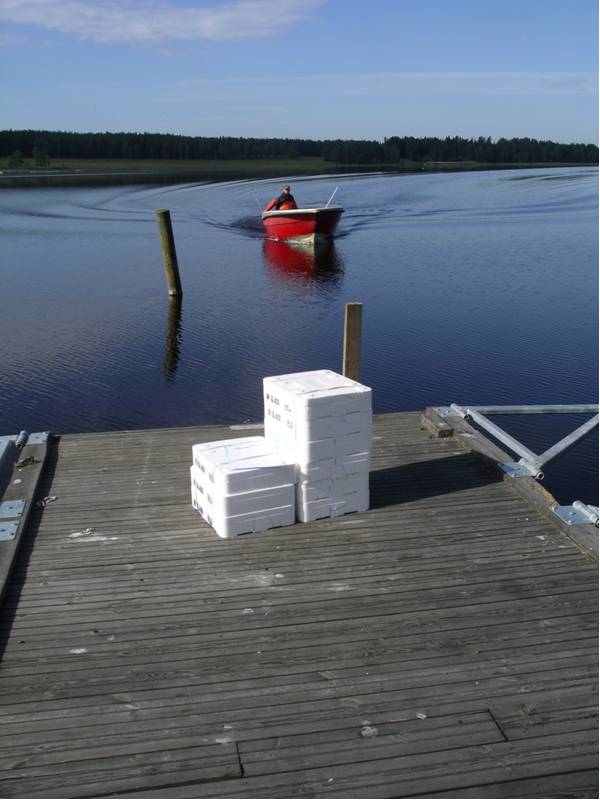
Restocking by boat
The eels used by Scandinavian Silver Eel, for restocking and farming, are imported from The Bristol Channel area of England and according to researchers the glass eel industry has not affected the local population of eels. It also has no effect on the larger eel population because the glass eels have insufficient energy to seek a new habitat. So glass eels exported for restocking programmes are glass eels that would otherwise simply have died. This is why Scandinavian Silver Eel is “helping nature” when it imports glass eels as around 70% of the glass eels imported are restocked and 30% are used for consumption. All of Scandinavian Silver Eel’s operations are based on glass eels that simply would not have survived in their natural environment.
Once exported to Sweden the glass eels must be quarantined for roughly 9 weeks to confirm they are not carrying any dangerous fish diseases. During this period the glass eels become pigmented and begin eating fish feed. The percentage survival in the quarantine is normally over 95%. Once they have passed the quarantine the small eels weigh 0,8-1,0g each and are ready to be restocked.
Scandinavian Silver Eel has been involved in restocking since 1984 and is responsible for releasing in Sweden over 23 million small eels into the wild. The funding for this restocking has come from the Swedish authorities, companies, private individuals and from the fishermen themselves. Scandinavian Silver Eel has also restocked rivers and lakes in Finland, Germany, Poland and Hungary.
Many people have wondered how successful the restocking programme in Sweden is? It is very successful as the Swedish authorities have proposed an increase in the number of eels used for restocking in their Eel Recovery Plan. There are normally two main objections to restocking glass eels from England in Swedish rivers and lakes. The first is that glass eels from England which are restocked in Sweden are unable to return to the Sargasso Sea and secondly that the eel population will be weakened genetically if glass eels from different areas of Europe are mixed. In answer to the first objection: it has been proved that eels restocked in coasts around Sweden attempt to return to the Sargasso Sea, but at present there is insufficient evidence to confirm that eels restocked in fresh water also attempt to return to the Sargasso Sea. In answer to the second objection: European eels are panmitic and this means they are from one population and any mixing of the population will not weaken it.
